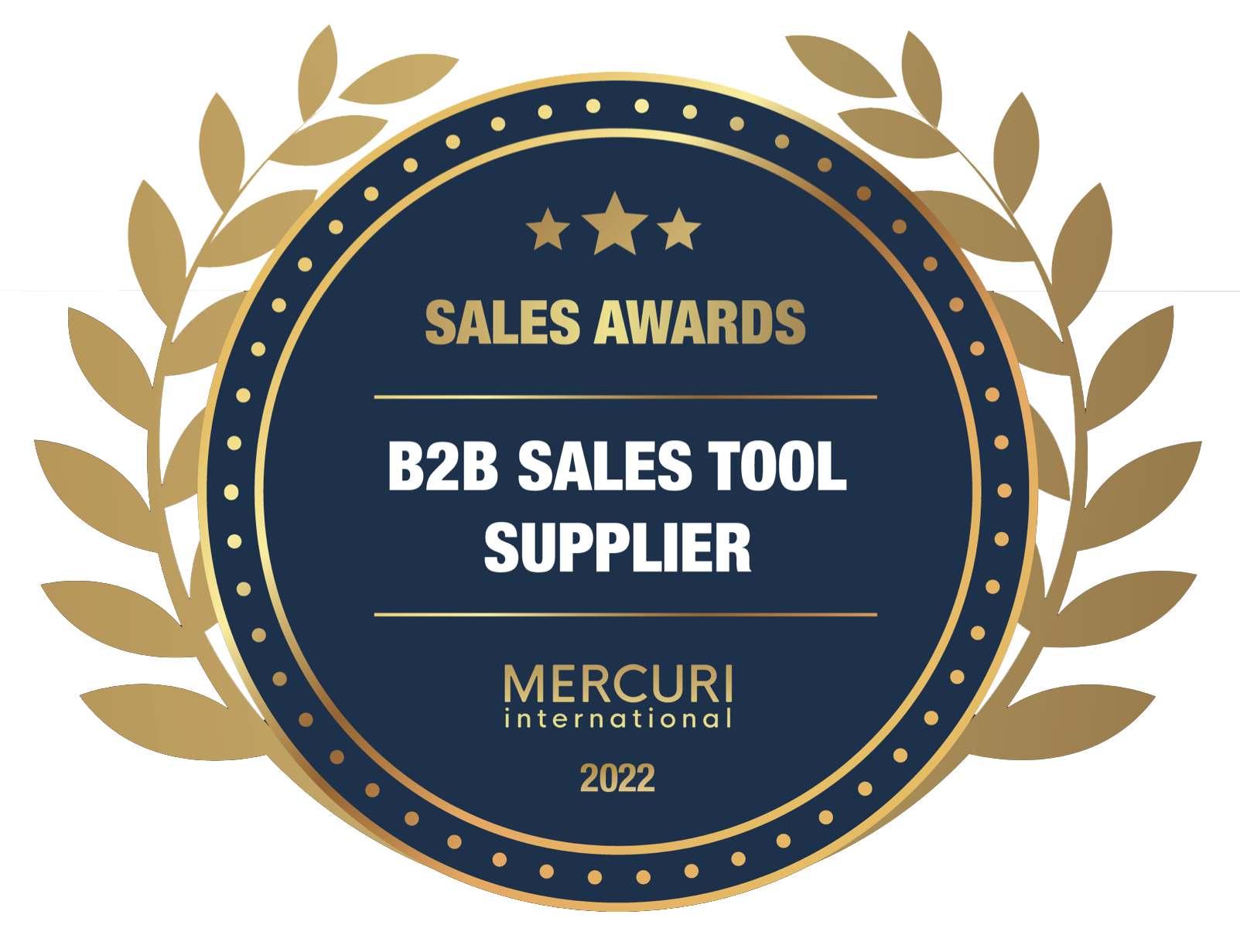It’s clear that virtual sales are not just here to stay, but will become the defacto standard for sales in the coming years. Where Gartner, for one, predicts that as many as 4/5th of sales interactions for B2B will be done virtually by the year 2025.
To make this transition to selling virtually easier, we’ve gathered and discussed a few common questions and answers. Answers that we hope can help you in your transformation to a digital-first sales organization.
What are virtual sales?
Simply put, virtual sales are sales that occur remotely. With this, it is a bit more broad than digital sales, describing the selling that is done via digital means. On a slightly deeper level, Gartner explains that ”virtual selling is the collection of processes and technologies by which salespeople engage with customer remotely”. A way of selling that oftentimes takes the place of previously, physical interactions.
What is remote selling?
Remote selling is, quite simply, sales that are made from a distance. With this, it is often used interchangeably with virtual selling.
How to make virtual sales?
While virtual sales do share a number of success factors with traditional, physical sales, they do differ in a few key areas. Where, for example, it is important to be where the customer is. I.e. to have your brand featured, and your sales representatives present, in the digital channels where your customers spend their time.
Furthermore, it is absolutely vital to see that the virtual sales meeting is not quite like the physical. Where the way sales representatives meet customers in these meetings will have to be adjusted to the format. Taking into account that:
- The attention span is generally lower during virtual meetings,
- Customers might be less inclined to share criticism during these virtual sales meetings, and that
- It is generally much more difficult to to see and interpret customer’s body language – and facial expressions – when in a virtual meeting.
There is, in other words, gaps that need to be bridged. Where an omnichannel model, the right tools for sales meetings and actively considering the differences between the virtual, and physical, sales meeting can be immensely beneficial.
How do you do a virtual sales call?
Both McKinsey and ADP have underlined the importance of video for virtual selling. This as opposed to audio only, and showing the potential benefits of using video in virtual sales calls. Furthermore, you may benefit from considering a few key practices succh as:
- having a set agenda that is as lean as it is clear,
- utilizing interactive elements to ensure customer engagement and focus, and
- having clear and narrow roles for participants.
On top of these elements it is a good idea to do a technical “hygiene” check before the call, providing that it is digital and not a mere phone call. Ensuring that the customer can access the call unobstructed, that the network is stabile and that microphones and cameras work properly. Preparations that form a good foundation, and works ensure a smooth call or meeting for all parties involved.
Is virtual selling here to stay?
Yes. Not only is virtual selling here to stay, it will most likely take more ground moving forward. For example, Gartner has predicted that “80% of B2B sales interactions between suppliers and buyers will occur in digital channels” by the year 2025. This, while McKinsey research shows that only 20 % of B2B buyers, who make purchases digitally, would want to go back to the traditional purchasing process. Something that clearly shows how virtual selling is here to stay, and indicates that the model will become the defacto standard before long.
With this, it becomes important to not only adjust your sales models in the short perspective. Instead, it will be beneficial to think long term and create a sustainable, digital-first sales organization. That way, you will have a competitive advantage and create a good basis for improving your sales now as well as tomorrow.
What is a digital sales room?
A digital sales room generally refers to a dedicated, digital space for communicating – and meeting – with potential customers. There, sales representatives can collaborate, add relevant information and interact with prospective customers remotely. All in the same, digital room.
A digital sales room can also be referred to as a virtual sales room.
What is a digital showroom?
A digital showroom, on the other hand, can be seen as a virtual space to present your products . This should be a flagship location that shows your brand in the best light possible, and work as one touchpoint between you and your customers. Generally speaking, digital showroom is used in place of – or in addition to – a physical store.
How do you create a virtual sales team?
A virtual sales team needs to behave differently than a physical sales team. There are also a number of key skills said sales team needs to adopt, to fit their approach to the new sales model.
For example, virtual sales teams need to fit their behavior, sales presentations and meetings to the virtual context. They might also need to improve their skills in areas such as social selling and active listening. This alongside more future-oriented skills such as data literacy.
As a result, you should create your virtual sales team with sales representatives that have these skills – or want to learn them – and then train them synchronously and asynchronously. I.e. with live sessions and educators as well as via e-learning/microlearning that they can go through at their own pace.
When managing your virtual sales team, the desired behaviors should be encouraged and evaluated. Expectations should be clearly set and followed-up on, and the same goes for results and feedback on established metrics. Something that becomes especially important as the virtual sales team will probably interact less with each other, and their manager, than physical sales teams.
In addition, it is important to give the virtual sales team the right tools for the job, ensuring that they can meet and interact with prospective customers, manager and each other with ease and effectiveness. The isolation that can come from solely working in a virtual setting also needs to be adressed, and should be bridged with, for example, continuous team interactions and meetings. Preferably in video form.
How do I work from home as a sales person?
Starting to work from home and sell remotely can be a challenge. After all, moving remotely as a sales person is not not merely about getting used to working remotely, but also to adjust your approach to sales to fit the format. The challenge is, with this, twofold, but can be tackled with the proper tools, habits and best practies.
For getting used to working remotely you may, for example, consider that:
- Working from home can come with new distractions that you may benefit from learning how to manage.
- Chances are, you will experience less managerial oversight. Something that, for exampel, could be made easier by developing your self-leadership, and by having continuous check-ins with manager and team.
- It can be isolating, moving from in-office work to remote. Where staying connected to your team and having scheduled calls – with video – can work as a way to remain connected and feel less isolated.
As for the sales that are now to be done virtually, you may benefit from:
- Adjusting your presentations and meetings to fit the format.
- Ensuring that your network, video and camera work properly.
- Growing comfortable, and utilizing, the new sales tools you may now have started using.
- Asking your team members for help if needed, and discussing challenges.
- Checking-in with manager and team continuously to follow up on results and what you’ve learnt.
- Develop your virtual meeting skills, learn how to efficiently meet virtually.
How can I succeed at selling remotely?
Using the proper, digital tools can help you succeed at selling virtually/remotely. Pick the best tools for the job, and make sure you can utilize them fully.
Learning how to meet customers virtually, and engage them in this new format, will also be immensely beneficial. Along with investigating where your customers are and engaging them in selected channels.



